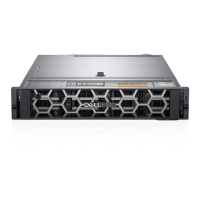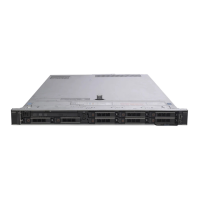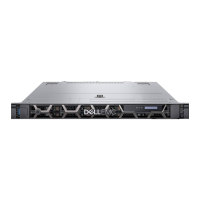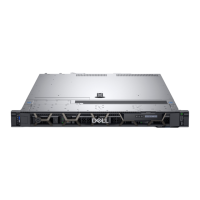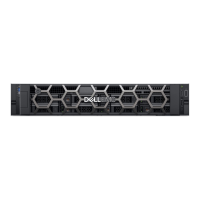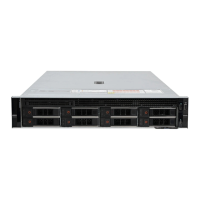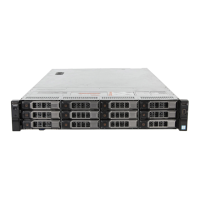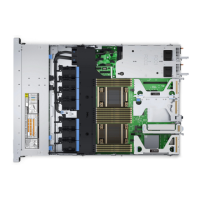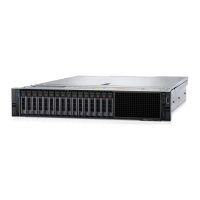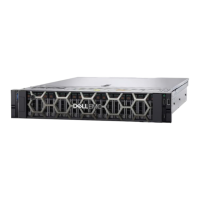Do you have a question about the Dell EMC PowerEdge R450 and is the answer not in the manual?
Configure BIOS, iDRAC, and device settings via system firmware.
Manage system BIOS settings, including memory, processor, and security.
Configure NVMe drive mode and boot driver settings for storage.
Define system boot mode (BIOS/UEFI) and boot sequence.
Modify the sequence of devices for system startup.
Configure UEFI PXE, HTTP, and iSCSI network boot options.
Manage onboard devices like USB ports, SD card, NICs, and video controller.
Configure serial port settings for console redirection and management.
Optimize system performance and power usage via predefined profiles.
Configure system passwords, TPM, Secure Boot, and other security features.
Set up backup disk location and state for redundant operating system boot.
Adjust system time, date, asset tag, and keyboard NumLock settings.
Configure iDRAC parameters using UEFI for remote management.
Configure parameters for storage controllers and network cards.
Manage system deployment, configuration, update, and diagnosis.
Advanced system management independent of the operating system.
Select boot options and diagnostic utilities.
Configure networked systems remotely using Preboot Execution Environment.
Configure BIOS, iDRAC, and device settings via system firmware.
Manage system BIOS settings, including memory, processor, and security.
Configure NVMe drive mode and boot driver settings for storage.
Define system boot mode (BIOS/UEFI) and boot sequence.
Modify the sequence of devices for system startup.
Configure UEFI PXE, HTTP, and iSCSI network boot options.
Manage onboard devices like USB ports, SD card, NICs, and video controller.
Configure serial port settings for console redirection and management.
Optimize system performance and power usage via predefined profiles.
Configure system passwords, TPM, Secure Boot, and other security features.
Set up backup disk location and state for redundant operating system boot.
Adjust system time, date, asset tag, and keyboard NumLock settings.
Configure iDRAC parameters using UEFI for remote management.
Configure parameters for storage controllers and network cards.
Manage system deployment, configuration, update, and diagnosis.
Advanced system management independent of the operating system.
Select boot options and diagnostic utilities.
Configure networked systems remotely using Preboot Execution Environment.
| On-board graphics card | - |
|---|---|
| Processor cache | 24 MB |
| Processor model | 4314 |
| Processor frequency | 2.4 GHz |
| Processor manufacturer | Intel |
| Processor boost frequency | 3.4 GHz |
| Number of processors installed | 1 |
| Memory types supported by processor | DDR4-SDRAM |
| Memory clock speeds supported by processor | 2666 MHz |
| Memory slots | 16x DIMM |
| Memory ranking | 2 |
| Internal memory | 16 GB |
| Buffered memory type | Registered (buffered) |
| Maximum internal memory | 128 GB |
| HDD size | 3.5 \ |
| HDD speed | 7200 RPM |
| HDD interface | SATA III |
| Hot-Plug support | Yes |
| Optical drive type | No |
| Total storage capacity | 2000 GB |
| Maximum storage capacity | - TB |
| Number of HDDs supported | 4 |
| Supported RAID controllers | PERC H345 |
| Chassis type | Rack (2U) |
| Product color | Black |
| Power supply | 600 W |
| Power cable length | 3 m |
| Power cable current | 15 A |
| Power cable connector 1 | C13 coupler |
| Power supply input voltage | 125 V |
| Compatible operating systems | Canonical Ubuntu Server LTS Citrix Hypervisor Microsoft Windows Server with Hyper-V Red Hat Enterprise Linux SUSE Linux Enterprise Server VMware ESXi |
| USB 2.0 ports quantity | USB 2.0 ports have a data transmission speed of 480 Mbps, and are backwards compatible with USB 1.1 ports. You can connect all kinds of peripheral devices to them. |
| USB 3.2 Gen 1 (3.1 Gen 1) Type-A ports quantity | 3 |
| Operating altitude | 0 - 3048 m |
| Non-operating altitude | 0 - 12000 m |
| Storage temperature (T-T) | -40 - 65 °C |
| Operating temperature (T-T) | 10 - 35 °C |
| Storage relative humidity (H-H) | 5 - 95 % |
| Operating relative humidity (H-H) | 8 - 80 % |
| Cabling technology | 10/100/1000Base-T(X) |
| Ethernet interface type | Gigabit Ethernet |
| Data transfer rate | 6 Gbit/s |
| Width | - mm |
|---|---|
| Height | 42.8 mm |
| Weight | 18620 g |


